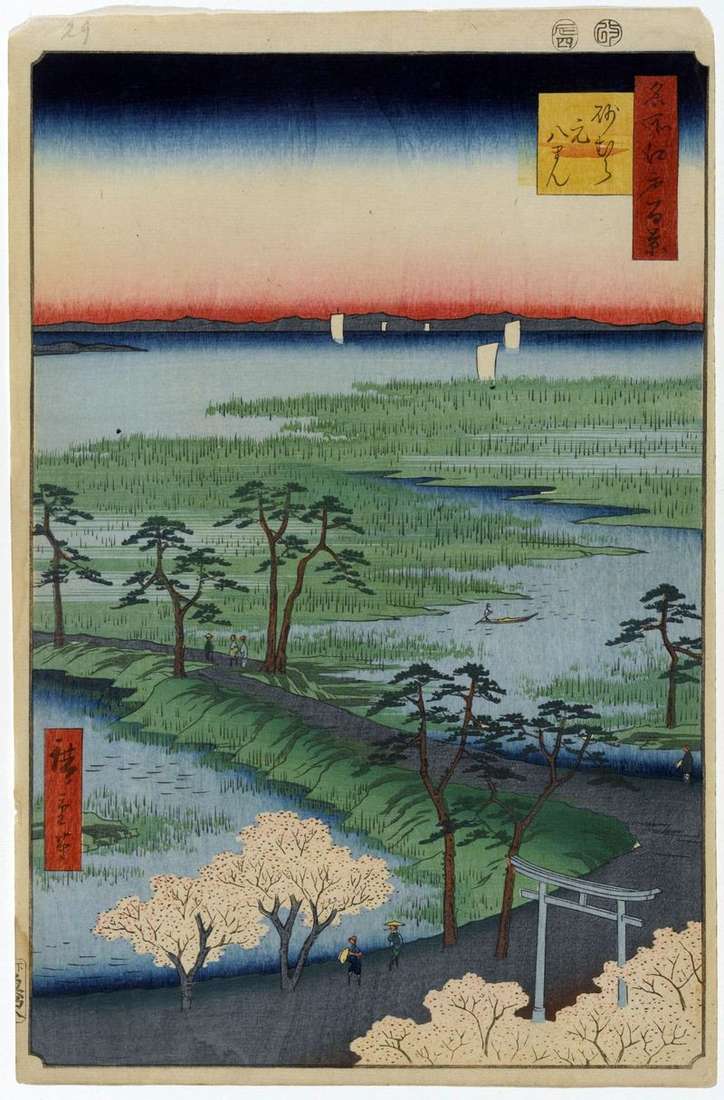
Until the middle of the 17th century, the area of Susaki in the east of Fukugawa was under the waters of the Gulf. In 1659, Sunamura Sindzaemon from Osaka drained part of the bay, here are rice fields, fortified by dams, on which grew pine and cherry. The new territory became known as Sunamura, by the name of the organizer.
Near the village of Sunamura Sinden there was an ancient Shinto shrine Moto-Hachiman, it is known that Minamoto Yerimasa and Ota Dokan visited him. Hiroshige does not represent the sanctuary itself, only the stone gate of the Thorium is seen, indicating the approach to the sanctuary from the south. In the distance, at the mouth of the Edogawa River, where it flows into the Gulf of Edovan, the sails grow white and further – the mountains of the peninsula of Boso.
In this series, Hiroshige often uses a technique in which the subject itself, which is declared in the title of the engraving, is not depicted and is its central theme. In this case, the view unfolds from the territory of the Moto-Hachiman sanctuary to the viewer. By the end of the Edo period, its territory became a place for people to walk. On the dark background of the road in the late edition of this engraving the gates of thorium are clearly distinguished. The scale of the horizon has been increased, over which the red-pink sunset sky turns into a dark blue strip.
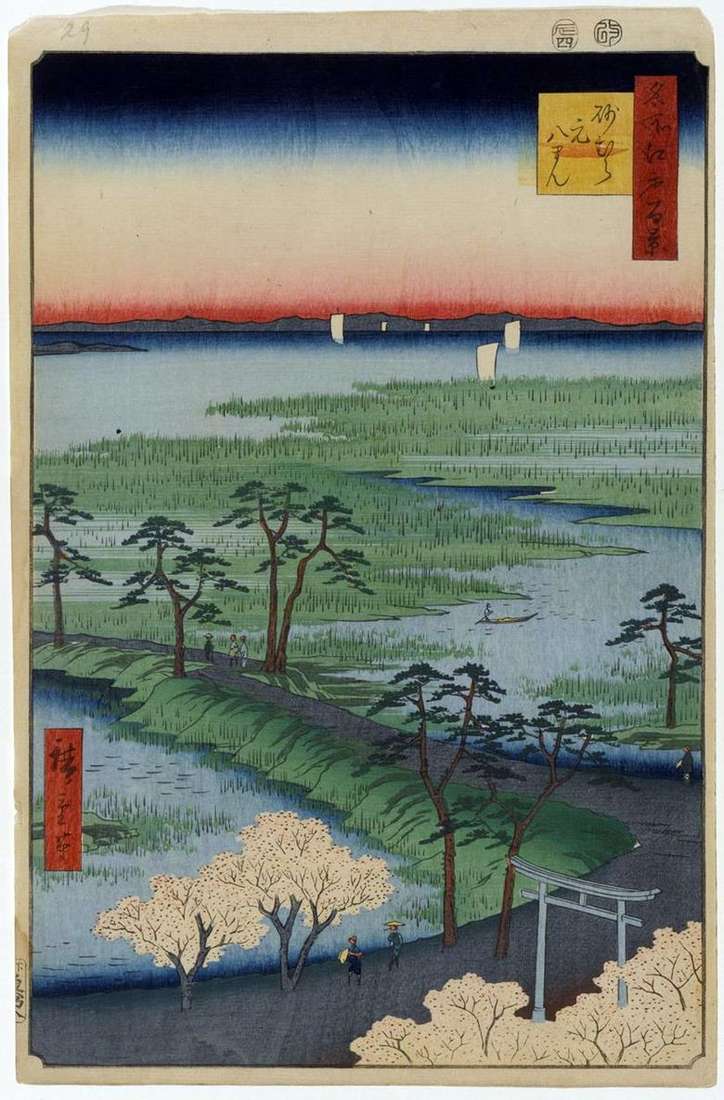 Santuario de Motohatiman en Sounamura – Utagawa Hiroshige
Santuario de Motohatiman en Sounamura – Utagawa Hiroshige Crossing Haneda, the sanctuary of Benten by Utagawa Hiroshige
Crossing Haneda, the sanctuary of Benten by Utagawa Hiroshige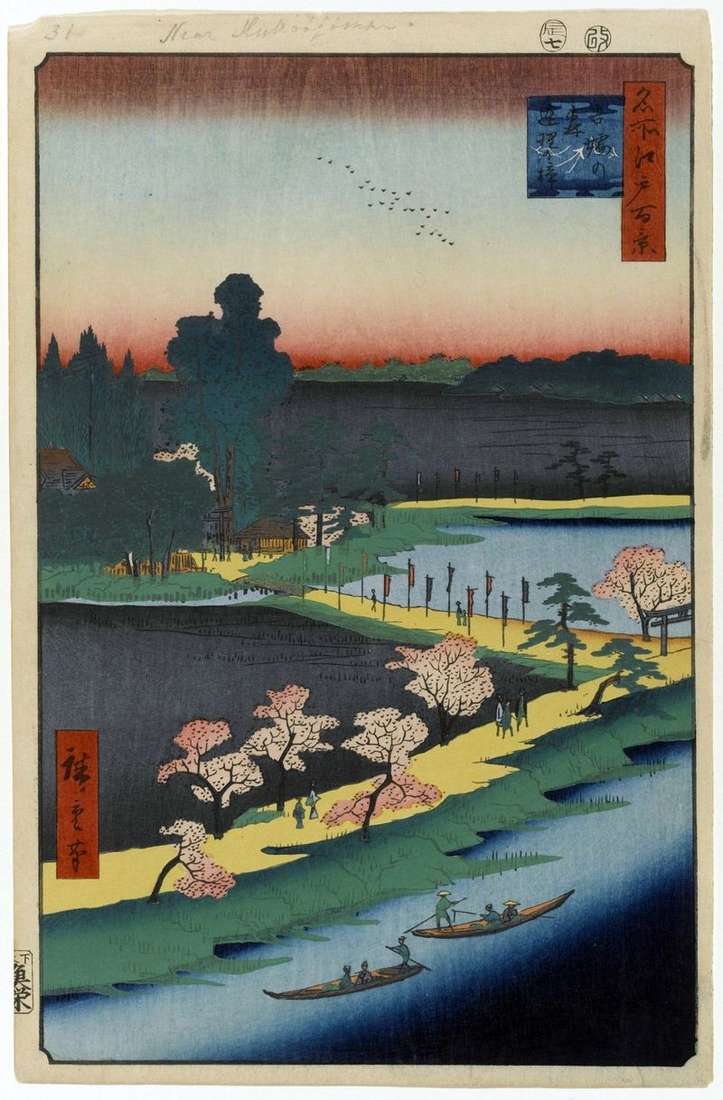 Agglomerated camphor trees at the sanctuary of Azuma-no Mori by Utagawa Hiroshige
Agglomerated camphor trees at the sanctuary of Azuma-no Mori by Utagawa Hiroshige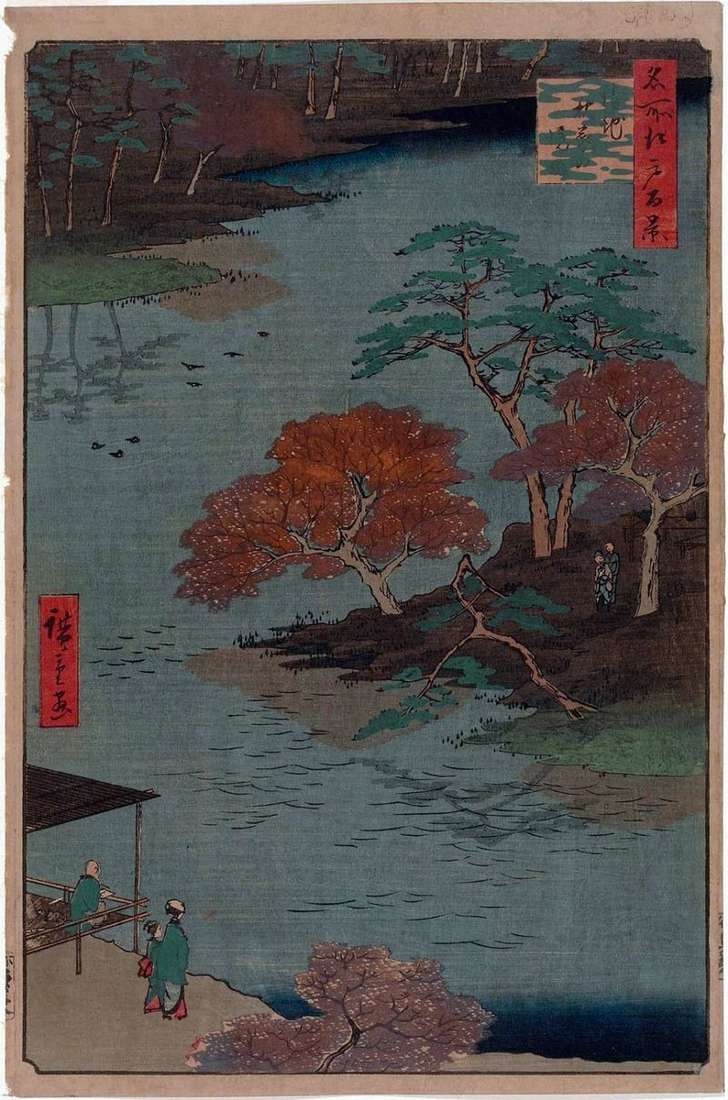 The sanctuary of Akiba in Ukate by Utagawa Hiroshige
The sanctuary of Akiba in Ukate by Utagawa Hiroshige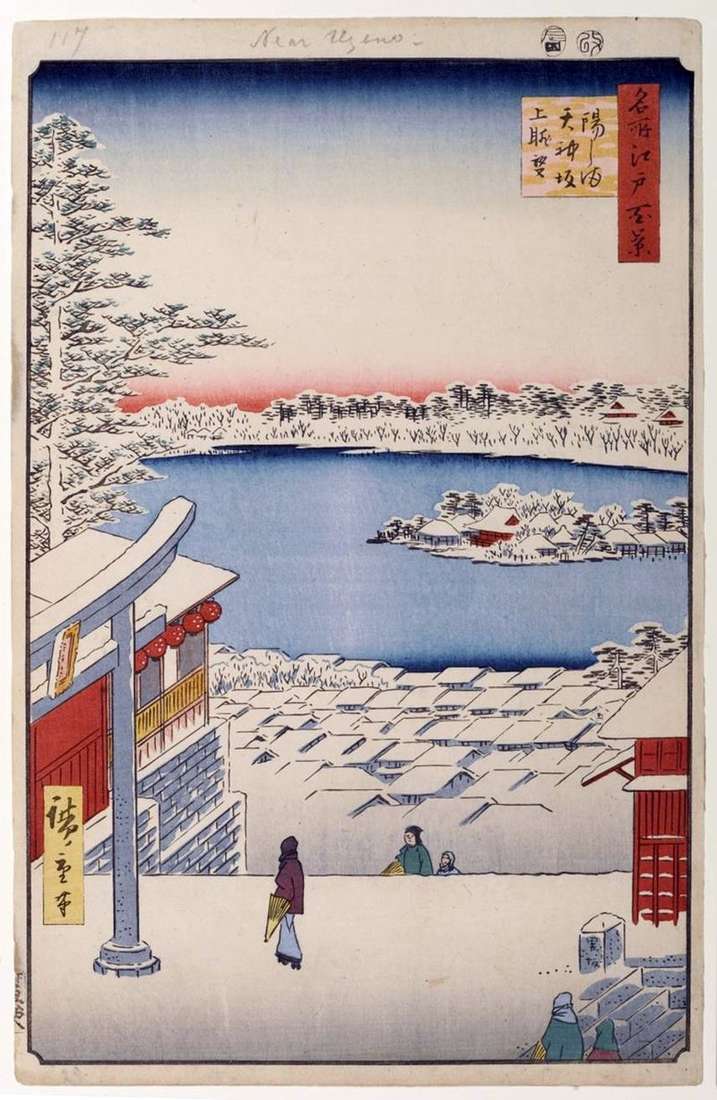 View from the hill of the sanctuary of Tenjin in Yusima by Utagawa Hiroshige
View from the hill of the sanctuary of Tenjin in Yusima by Utagawa Hiroshige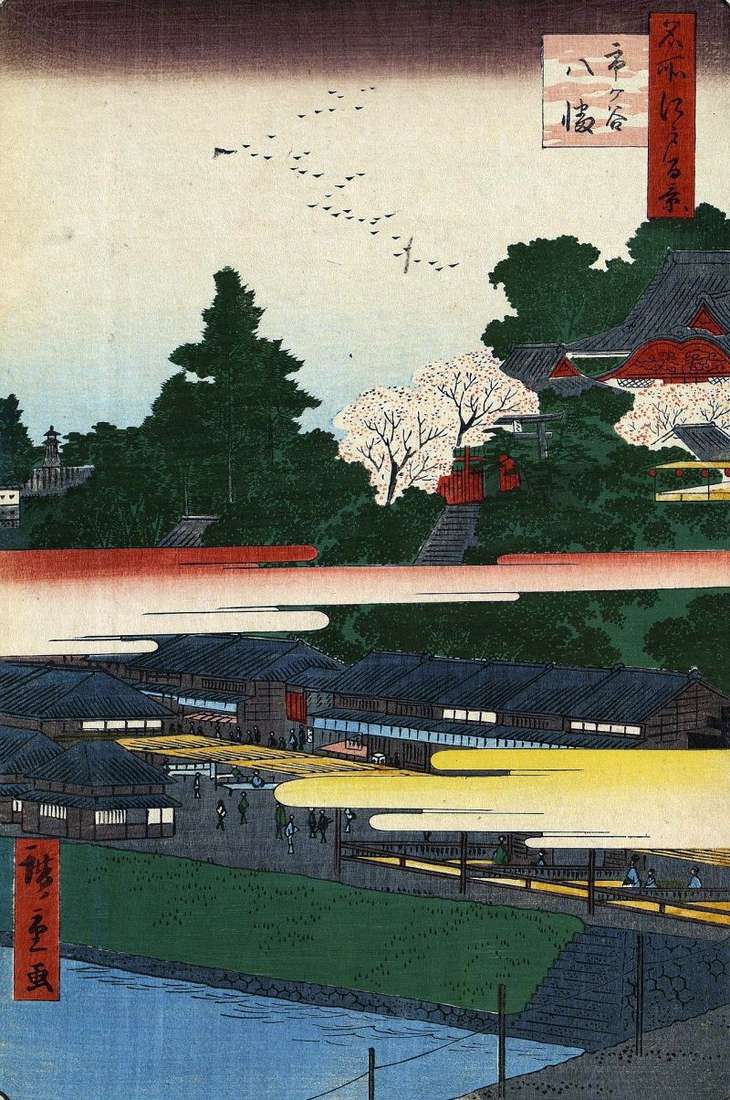 Hachiman sanctuary in Itigaya by Utagawa Hiroshige
Hachiman sanctuary in Itigaya by Utagawa Hiroshige Sanamura Motohachiman Shrine – Utagawa Hiroshige
Sanamura Motohachiman Shrine – Utagawa Hiroshige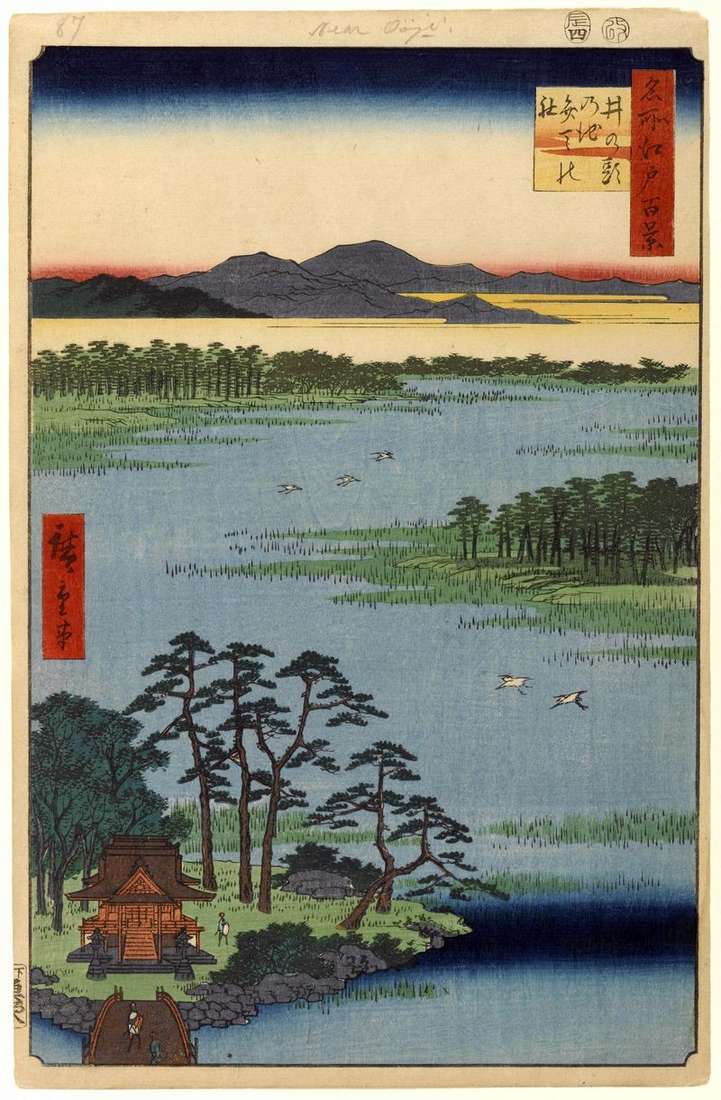 Sanctuary of Benten on the pond of Inokasira no Ike by Utagawa Hiroshige
Sanctuary of Benten on the pond of Inokasira no Ike by Utagawa Hiroshige